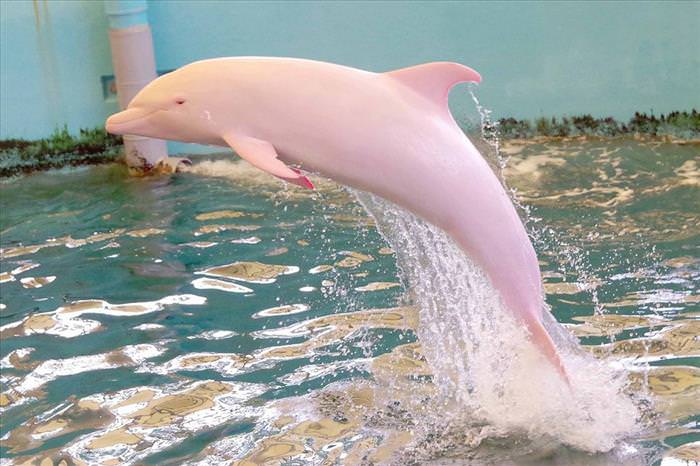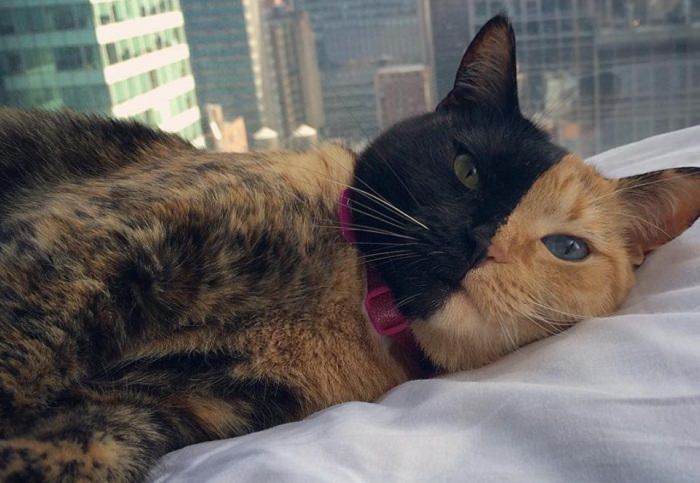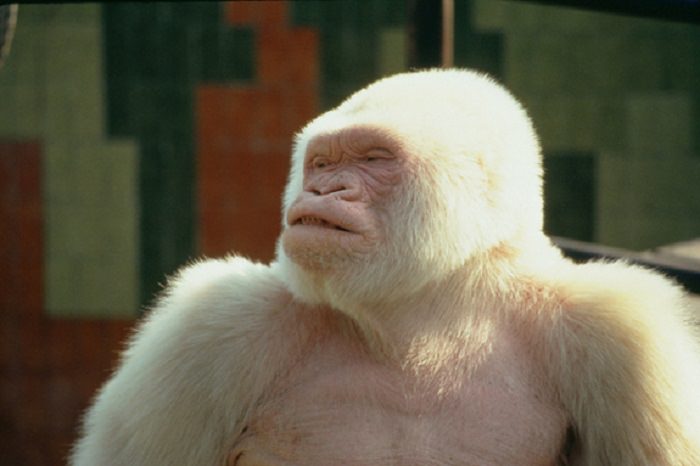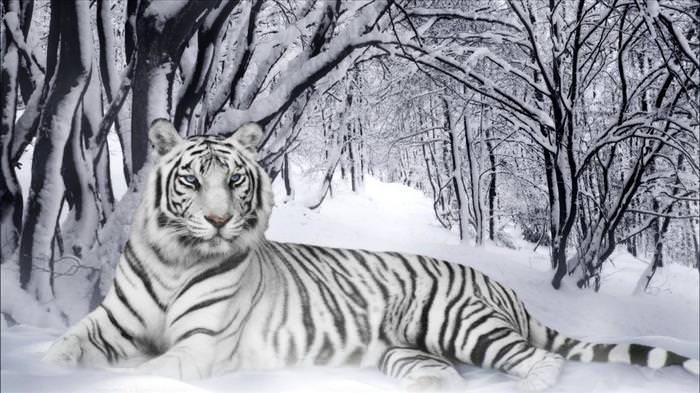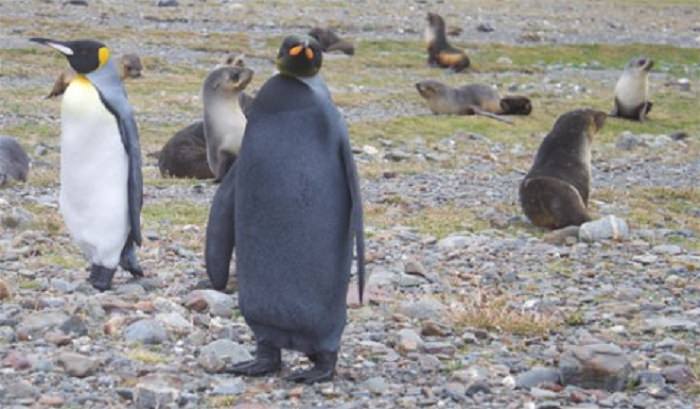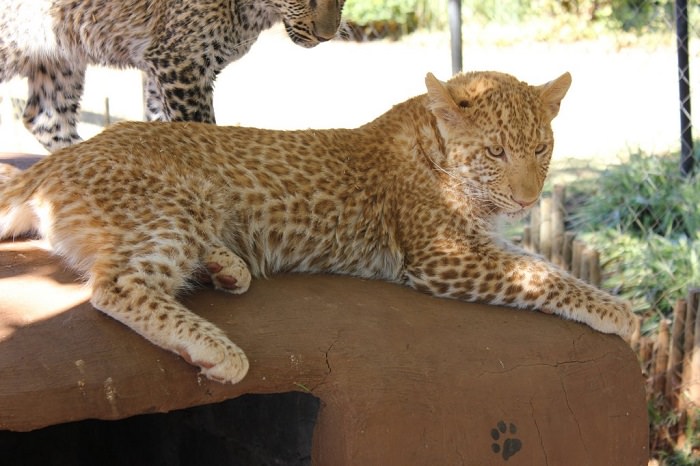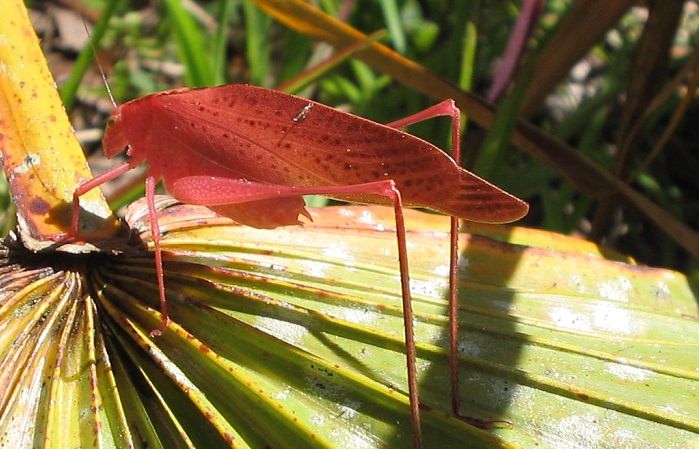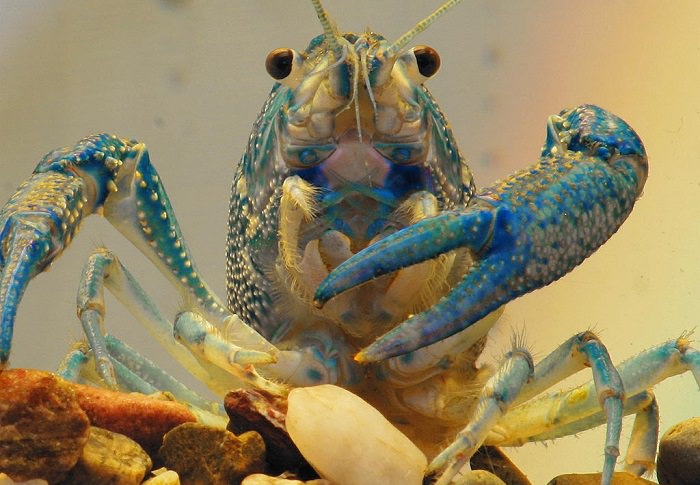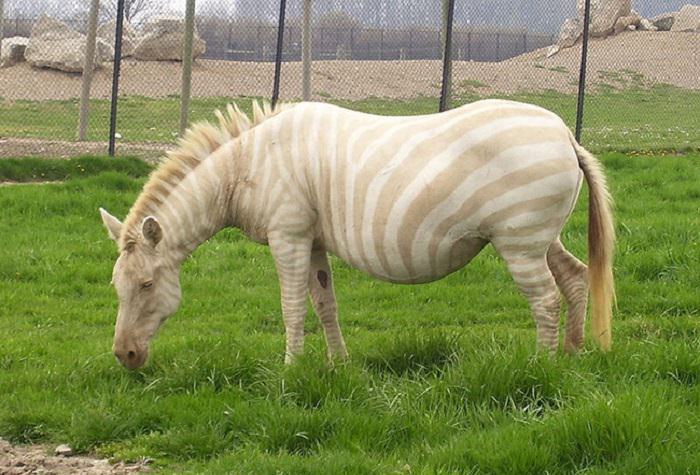1. The Brown Panda
Pandas have one of the most famous and distinctive colored coats in the animal kingdom, and it's one that has enchanted humans for centuries. However, it isn't always black and white in the panda world. In one remote region of China, lives a small number of special pandas with brown fur. It is believed that the color of their coat has come from a combination of diet and generations of genetic mutations. Brown pandas are very rarely spotted in the wild, although there are examples in captivity.
2. The Pink Dolphin
Pink dolphins look like they swam straight out of a children's fairy-tale, but they are real and take on this hue due to albinism. This mutation can occur across most dolphin species. Some are more pink than others, with the most brightly-colored examples offering a fantastically unique sight.
3. The Chimera Cat
Meet Venus, the incredible cat with two faces. The unusual coloring comes from a condition called chimerism, which occurs when two distinct genetic cells exist in one single organism. As well as one half of the face being black, and the other half being ginger, Venus has one blue eye and one yellow. She is something of a celebrity and even has her own webpage.
4. The Albino Gorilla
Albinism is a congenital condition, characterized by a lack of pigment in the skin, hair and eyes. It exists across numerous species, including humans. It is very rare in large primates. This albino gorilla, called Snowflake, lived most of his life in Barcelona Zoo, fathering 22 offspring before his death in 2003. All the hair on his body was completely white.
5. The White Tiger
White tigers are one of the most majestic and beautiful animals in the world, famed for their icy coloring and piercing eyes. They have a pigment variation in comparison to the more commonly-colored Bengal tiger, but are not albinos. Just as humans can have blonde hair or brown hair, white tigers are simply a variation - one we can all be thankful for.
6. The Black Penguin
This penguin looks like he forgot to put his apron on in the morning, but he is actually the result of a very rare genetic quirk. In fact, it is so rare that only one black penguin has ever been spotted. Since this one was photographed by National Geographic, they have appealed for more sightings of all-black penguins and asked the public to post their own evidence of this extremely rare variant of an iconic species.
7. The Strawberry Leopard
A leopard never changes its spots, as the old saying goes, but this one looks like he has. There are only two known 'strawberry' leopards in existence, and they display stunning ginger spots rather than the black coloring standard in their species. It is believed that they get their unusual spots from a rare condition which stems from an overproduction of red pigment, but it makes them look particularly special.
8. The Pink Katydid
Crickets and stick insects are known for their ability to blend into their green surroundings, but this one may find camouflage rather difficult, unless he happens to be in a raspberry field! The ultra-rare, pink katydid gets its color from the same disorder that has given us strawberry leopards, and although it makes them look spectacular, it isn't particularly practical given that it makes them very visible fodder for passing predators!
9. The Blue Lobster
Blue Lobsters are the result of a genetic mutation that infuses them with a large amount of a particular protein, giving their exoskeletons a bizarre blue color rather than the familiar red. It is not as rare as some of the other mutations discussed in this list, with over 2 million blue lobsters estimated to be in existence. Their color often saves them from the human cooking pot so it's a little more useful than the pink is to the katydid!
10. The Golden Zebra
This zebra is one of very few examples in existence in the world and has light, gold stripes rather than black. Aptly, named the 'golden zebra', she is not an albino, but has a similar pigmentation mutation caused by a condition called amelanism. She looks like she has stepped out of a fantasy world and you have to wonder whether she realizes just how special she really is!
Image Sources: Daily Mail, New Scientist, Facebook, Live Science, National Geographic, Izahnvh, flickr user Jenny, flickr Kamillo Kluth, shareably.net


